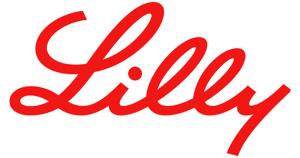Well whaddya know? Eli Lilly to reduce insulin copays to...$35/month.

Hey, remember the Inflation Reduction Act?
Remember how one of its healthcare provisions includes putting a copay cap of $35/month on insulin for Medicare enrollees?
Remember how Congressional Democrats & President Biden attempted to make the $35/mo insulin cap apply to ALL Americans as part of the defunct Build Back Better bill but had to settle for it only applying to the ~65 million on Medicare?
Well, guess what just happened? Via Rebecca Robins & Christine Hauser of the New York Times:
The drug maker Eli Lilly and Company said on Wednesday that it would significantly reduce the prices of several of its lifesaving insulin products that are used by diabetes patients and whose prices Lilly has repeatedly increased in the past.
Lilly also said it would cap at $35 a month what patients pay out of pocket for the drugmaker’s insulin products.
Insulin, which is usually taken daily, has grown increasingly expensive in recent years despite the introduction of new competition. Many diabetes patients ration their medicines or discontinue them because of the cost. More than 30 million Americans live with diabetes, and more than seven million of them rely on insulin.
Lilly’s cuts to the products’ list prices, which will take effect over the course of this year, apply only to the company’s older insulin products.
It's important to note that the list price reduction (which is still a good thing) is separate from the $35/mo copay cap.
Eli Lilly’s move to limit out-of-pocket costs expands on a change that went in to effect at the start of this year for patients on Medicare. Under last year’s Inflation Reduction Act, Congress imposed a $35 a month ceiling on insulin co-payments for Medicare patients.
Lilly said it planned in the last three months of this year to reduce the list price of its most commonly used insulin, Humalog, as well as another insulin product, Humulin, by 70 percent.
...Lilly said it would immediately reduce the price of its generic version of Humalog to $25 per vial, down from $82, a change that the company said would reduce the price to less than it was in 1999.
Let's be clear here: Eli Lilly doesn't deserve too many kudos for tripling or quadrupling the price of insulin over the past 20 years (when the underlying cost has remained pretty much the same) before dropping it back down again after raking in billions in profits, but...hey, a good thing is still a good thing.
As for the copay cap, that part is kind of interesting, since that's normally something that would be up to the insurance carriers, but it sounds like Lilly has the authority to do this baked into their contracts with insurers:
Effective immediately, Lilly will automatically cap out-of-pocket costs at $35 at participating retail pharmacies for people with commercial insurance using Lilly insulin.
People who don't have insurance can continue to go to InsulinAffordability.com and immediately download the Lilly Insulin Value Program savings card to receive Lilly insulins for $35 per month.
According to Lilly, they have around 30% of the insulin market. I presume this move will force other insulin makers to lower their prices as well.
I don't know exactly what Lilly's game is here; it might be an attempt to stave off the across-the-board copay cap which Dems were originally hoping to pass last year, but that doesn't seem like the whole story since, again, copays aren't the same thing as list prices--a $35/mo copay cap still lets them charge whatever they think they can get away with for the list price.
However, one thing which does come to mind is this story by Dylan Scott in Vox from last month:
Insulin is way too expensive. California has a solution: Make its own.
The drug’s cost crisis is spurring states to pursue a public version of an essential medication.
[Insulin] was discovered 100 years ago, and it provides essential and ongoing treatment for millions of people living with diabetes, one of the most common chronic diseases in the country. And yet one in six Americans with diabetes who use insulin say they ration their supply because of the cost. Some people end up spending nearly half of their disposable income on a medicine they must take to stay alive.
Though insulin generally costs less than $10 per dose to produce, some versions of the drug have a list price above $200. This is in part because, in the US, a warped market has allowed three companies to dominate the insulin business.
But if some states have their way, that may be about to change.
With California leading the way, a handful of states are considering trying to disrupt the market for essential medications, starting with insulin. The plan would be to manufacture and sell insulin themselves for a price that is roughly equivalent to the cost of production.
Their premise: Take away the private market’s profit motive and maybe states can deliver affordable insulin as a wholly public enterprise, run by civil workers, that does not need to make money. Because these states buy a lot of drugs too, through their Medicaid programs and the health plans for government workers, they would also reap the rewards if those drugs are cheaper.
There's an old saying in the financial investment world: Pigs get fat; hogs get slaughtered.
Put another way, it's one thing to be a little greedy, but if you're too greedy for too long, eventually you'll be made irrelevant. And the drug industry has been extremely greedy for a very long time indeed.
How to support my healthcare wonkery:
1. Donate via ActBlue or PayPal
2. Subscribe via Substack.
3. Subscribe via Patreon.



